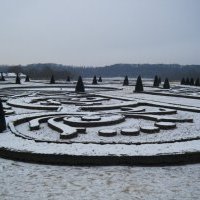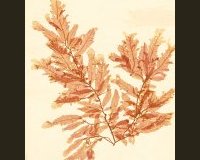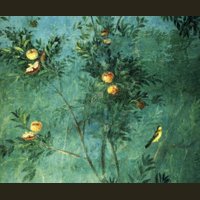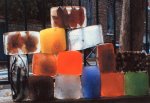accueil site > 45. Archives > Paysage et patrimoine > 01. Teaching materials > 01. Nursery school > Ice Wall Creation
-
45. Archives
-
Paysage et patrimoine
-
01. Fiches pédagogiques
Disciplines
-
01. Teaching materials
Disciplines
-
02. Jardin sans frontière : une école pour développer les compétences -clés en Europe
- 04. Partenaires
- 05. Rencontres transnationales
- 14. À l’école du jardin. Mobilités de formation dans les jardins d’Europe
- 15. À l’école européenne du jardin. Paroles de formateurs sur leurs formations "entre pairs"
- 16. A l’école auropéenne du jardin. Paroles d’apprenants sur leurs mobilités Erasmus+
- 19. Petit glossaire "européen" du jardin
- 20. Dissémination
- 21. Exploitation locale du projet
- 03. Un nouvel Erasmus+ : Le bleu européen comme étendard contre l’exclusion des adultes
-
09. Erasmus+ partenariato
-
Cammini del Blu in Europa
- 01. Incontri transnazionali
- 05. Progetti blu di partners
- 10. Percorsi europei del Blu
- 20. Storie blu
- 40. Disseminazione
- 43. Transcultural Carpet Blue
- 45. Missive blu
- 46. Glossario blu
- 47. Schede didattiche "Pedagogia del colore blu in Europa"
- 48. Illustrazioni delle schede didattiche : Mostra delle opere degli studenti
-
Giardino senza frontiere. Una scuola per lo slivuppo di competenze chiave in Europa
- 04. Partners
- 05. Riunioni transnazionali
- 14. Alla scuola del giardino. Mobilità di formazione nei giardini d’Europa
- 15. Alla scuola del Giardino. Parole di formatori sul loro addestramento "tra pari"
- 16. Alla scuola del giardino. Parole dei discenti sul loro Erasmus + Mobilità
- 19. Piccolo glossario europeo del giardino
-
Cammini del Blu in Europa
-
11. Erasmus+ Partnership
- 01. Transnational Meetings
- 05. Blue Projects of partners
- 07. European roads of the Blue
- 10. Blue stories
- 40. Dissemination
- 43. Transcultural Carpet Blue
- 45. Blue Missives
- 46. Blue Glossary
- 48. Roads of the blue : the file
- 50. Illustrations of the pedagogic file : exhibition of works of learners
-
51. Garden Without Borders : A School for Developing Key Competences in Europe
- 04. Partners
- 05. Transnational meetings
- 14. At Garden School. Training mobilities in the gardens of Europe
- 15. At Garden School. Words of trainers on their "peer-to-peer" training
- 16. At Garden School. Learners’ words about their mobility Erasmus +
- 19. Small European glossary of the garden
- 20. Dissemination
-
11. Partenariats Erasmus+
-
01. Les chemins du bleu en Europe
- 01. Rencontres transnationales
- 05. Projets bleus des partenaires
- 10. Routes du Bleu en Europe ...
- 20. Histoires Bleues
- 40. Dissémination
- 43. Transcultural Carpet Blue
- 45. Missives bleues
- 46. Glossaire bleu
- 47. Formation pédagogique : fiches pédagogiques et référentiel de compétences clés et transversales
- 50. Illustrations des fiches pédagogiques : exposition des travaux des apprenants
-
01. Les chemins du bleu en Europe
- 12. Pedagogic tools
- 17. Fiches pédagogiques
- 17. Schede Pedagogiche
-
01. Fiches pédagogiques
- 05. Livre d’or des formations
- 07. Livre d’or des formations Comenius - Grundtvig
- 10. National
- 20. International
-
Paysage et patrimoine
Ice Wall Creationdimanche 24 août 2008
Develop a project linking arts and science : set, in the schoolyard, an “ice wall".
OBJECTIVES
![]() to discover and experiment different techniques allowing the observation of the various states of water
to discover and experiment different techniques allowing the observation of the various states of water
![]() Combine arts and science : create an artwork with ice
Combine arts and science : create an artwork with ice
SKILLS
![]() To observe the changing of water states. Identify them.
To observe the changing of water states. Identify them.
![]() To develop a visual creation project from these observations.
To develop a visual creation project from these observations.
MATERIALS
![]() Tubs (rectangular salvaged ice-cream packages of one litre)
Tubs (rectangular salvaged ice-cream packages of one litre)
![]() Food or natural colourings
Food or natural colourings
![]() Inks
Inks
![]() Materials picked up in the garden
Materials picked up in the garden
![]() A freezer
A freezer
![]() Photos and postcards displaying winter landscapes.
Photos and postcards displaying winter landscapes.
REFERENCES
Nils-Udo
PROCEDURES
Before the session,
![]() Observe photos of artworks set in the nature. For example, observe the setting of leaves and petals from Nils-Udo.
Observe photos of artworks set in the nature. For example, observe the setting of leaves and petals from Nils-Udo.
![]() Imagine building such settings in the schoolyard on the winter theme : an ice wall.
Imagine building such settings in the schoolyard on the winter theme : an ice wall.
![]() Make the children realize the winter colours by observing photos and postcards. The pupils specify the features of this wall : the cold, the ice, the cold colours, materials fallen during autumn that stay when the winter arrives.
Make the children realize the winter colours by observing photos and postcards. The pupils specify the features of this wall : the cold, the ice, the cold colours, materials fallen during autumn that stay when the winter arrives.
![]() Search for techniques to build an ice wall.
Search for techniques to build an ice wall.
![]() Make ice cubes : the pupils don’t easily understand that ice can be of another size than the ice made in ice tubs. Make them create ice cubes to see that gathering small ice cubes is a long and complex process. The children propose to make big ice cubes with bigger tubs (1 litre).
Make ice cubes : the pupils don’t easily understand that ice can be of another size than the ice made in ice tubs. Make them create ice cubes to see that gathering small ice cubes is a long and complex process. The children propose to make big ice cubes with bigger tubs (1 litre).
![]() Gather the ice blocks in the schoolyard
Gather the ice blocks in the schoolyard
Refer to the images. Develop the project to associate some elements to ice :
![]() colours : find a way to colour ice. The pupils who have already experimented the food colourings in the kitchen could use it and make experiments. Others propose inks…
colours : find a way to colour ice. The pupils who have already experimented the food colourings in the kitchen could use it and make experiments. Others propose inks…
![]() observe the ice blocks in the light. Propose to make other blocks inserting natural elements from the garden (chestnuts, leaves, holly, earth, grass…)
observe the ice blocks in the light. Propose to make other blocks inserting natural elements from the garden (chestnuts, leaves, holly, earth, grass…)
At the end of the afternoon, gather the ice blocks one next to another and make the whole thing rest on a wall or railings. Observe the difference of light according to the medium and the ice transparency.
Take a photo of this collective short-lived work.
FOLLOW -ON ACTIVITIES
![]() Observe the schoolyard as seasons pass.
Observe the schoolyard as seasons pass.
![]() In science class, experiment the different states of water, its cycle.
In science class, experiment the different states of water, its cycle.
ASSESSMENT
It will turn around knowledge on science :
Realize that :
![]() water does transform in ice in the freezer and at low temperature
water does transform in ice in the freezer and at low temperature
![]() the colouring dissolves itself in the entire water volume
the colouring dissolves itself in the entire water volume
![]() if you put an object in water and freeze the whole thing, the water transforms into ice around the object.
if you put an object in water and freeze the whole thing, the water transforms into ice around the object.
Laurence Sidersky , Nursery School Alsace Saint Germain-Laye Yvelines France


















 Version imprimable
Version imprimable
